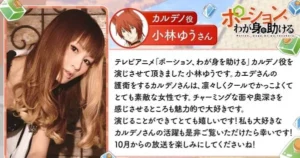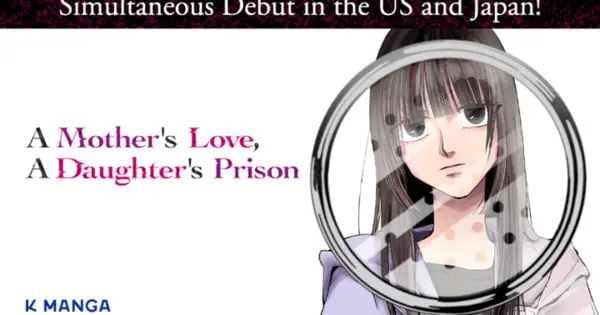“A Mother’s Love, A Daughter’s Prison,” a manga exploring the chilling true story of a daughter driven to murder by her abusive mother, has reached its conclusion. The series, adapted from a non-fiction book by Aya Saito, delves into the harrowing experiences of Hikari Miyagawa, a young woman subjected to years of relentless emotional and physical abuse by her mother, Yaeko.
A Glimpse into a Daughter’s Torment
The manga, with art by Satokun, paints a grim picture of Hikari’s life. Yaeko’s obsession with her daughter becoming a doctor led to a virtual prison of endless studying and exam retakes. Even after nine years of failed attempts to enter medical school, Yaeko refused to let Hikari pursue her own dreams, trapping her in a cycle of despair and abuse.
The story opens with the discovery of Yaeko’s dismembered body and Hikari’s subsequent confession. “A Mother’s Love, A Daughter’s Prison” then unflinchingly explores the events leading up to the murder, offering a disturbing look into the dysfunctional relationship between mother and daughter.
Decoding Emotional Abuse
Emotional abuse, a central theme in the manga, is a subtle yet devastating form of maltreatment. It involves behaviors that undermine a person’s sense of self-worth and emotional well-being. According to child protection policies, emotional abuse can include:
- Bullying: Repeatedly targeting someone with hurtful words or actions.
- Belittling: Making someone feel worthless, unloved, or inadequate.
- Isolation: Cutting someone off from friends and family.
- Constant Criticism: Regularly finding fault with everything someone does.
- Threats: Instilling fear through words or actions.
- Gaslighting: Manipulating someone into questioning their own sanity.
In “A Mother’s Love, A Daughter’s Prison,” Yaeko employs various forms of emotional abuse to control Hikari, eroding her self-esteem and pushing her to the brink. The manga vividly depicts how such abuse can warp a person’s perception of reality and lead to tragic consequences.
The Allure and Danger of True Crime
The manga’s appeal lies, in part, in its true-crime basis. The story is rooted in an actual case from Shiga Prefecture, Japan, where a daughter murdered her mother after years of abuse and pressure. This element of reality adds a layer of intrigue and horror, prompting readers to reflect on the dark side of human relationships.
However, true crime narratives must be approached with caution. It’s crucial to remember that these stories involve real people and real tragedies. Sensationalizing or glorifying violence can be harmful and disrespectful to victims and their families. “A Mother’s Love, A Daughter’s Prison” navigates this delicate balance by focusing on the psychological impact of abuse and exploring the complex factors that led to the crime.
Themes and Critical Reception
“A Mother’s Love, A Daughter’s Prison” tackles several weighty themes:
- The dark side of parental love: The manga explores how love can become twisted and controlling, leading to devastating consequences.
- The pressure to succeed: Yaeko’s relentless pursuit of Hikari’s medical career highlights the damaging effects of unrealistic expectations.
- The cycle of abuse: The story raises questions about whether Hikari’s actions were a result of the abuse she endured.
- The search for freedom: Hikari’s desperate desire to escape her mother’s control is a driving force throughout the manga.
The manga has garnered mixed reactions from readers. Some have praised its unflinching portrayal of abuse and its exploration of complex psychological themes. Others have criticized its pacing and its potentially triggering content.
Decoding Manga and Emotional Impact
Manga, as a visual medium, possesses a unique capacity to convey complex emotions and narratives. Its impact on readers stems from several key factors:
Visual Storytelling: Manga employs panels, character designs, and symbolic imagery to communicate emotions and plot points effectively. The visual cues can intensify the story’s emotional impact, making it more relatable and memorable for the reader.
Character Development: Manga often invests significant time in developing characters, allowing readers to form deep emotional connections. This investment heightens the emotional impact of the narrative, as readers become more invested in the characters’ struggles and triumphs.
Cultural Resonance: Manga often reflects cultural values, societal issues, and personal experiences, creating a resonance with readers. This resonance deepens the emotional impact of the manga, as readers connect with the themes and messages on a personal level.
Catharsis and Reflection: Reading manga can provide readers with a cathartic release of emotions as they vicariously experience the characters’ journeys. This emotional release can lead to reflection on personal experiences, societal norms, and ethical dilemmas, making manga a powerful tool for self-discovery and social commentary.
Potential Pitfalls
Some readers may find the manga’s graphic depiction of abuse disturbing or triggering. It’s important to approach the story with sensitivity and be aware of its potential to evoke strong emotional reactions.
Additionally, some critics argue that the manga simplifies a complex issue and potentially sensationalizes a real-life tragedy. It’s crucial to remember that “A Mother’s Love, A Daughter’s Prison” is a fictionalized account of a true story and should not be taken as a definitive explanation of the events.
Where to Read
“A Mother’s Love, A Daughter’s Prison” was available in English as a simulpub through Kodansha USA’s K MANGA service. However, with the series now concluded, readers can likely find it on various manga platforms and possibly in print. It is also available on aggregator sites like Bato.
The Legacy
Regardless of individual opinions, “A Mother’s Love, A Daughter’s Prison” has sparked conversations about the complexities of family relationships, the insidious nature of abuse, and the importance of seeking help when needed. The manga serves as a stark reminder of the devastating consequences of unchecked emotional and physical torment, urging readers to consider the hidden struggles within families and the importance of empathy and understanding. It is a story that lingers long after the final page, prompting reflection on the intricate dynamics of love, control, and the desperate search for freedom.









